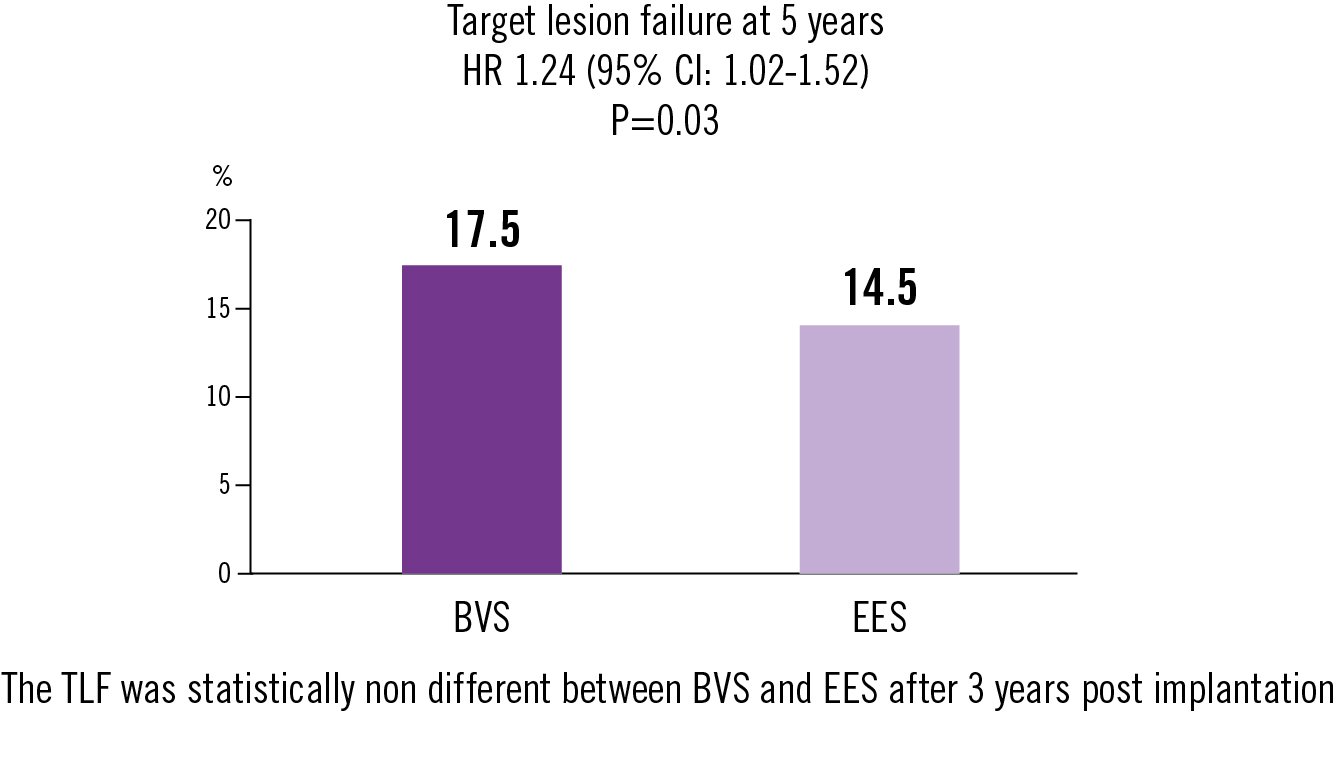Objective
to report the 5-year clinical outcomes of bioresorbable vascular scaffold implantation (BVS) compared to cobalt chromium everolimus-eluting stents (CoCR-EES)
Study
multicentre, blinded, active-treatment-controlled randomised trial
Population
patients with stable or acute coronary syndromes. BVS implantation technique: pre-dilatation mandatory and high-pressure post dilatation to 0.5mm larger than nominal scaffold diameter
Endpoints
TLF as composite of cardiac death, MI, or ischemia-driven TL revascularisation


Conclusion
the 5-year rate of target lesion failure was 3% greater after BVS implantation, due to an initial higher 3-year risk of MACE which was not different 3-years after implantation
Stone et al. J.Am Coll Cardiol 2023; 82: 183-195